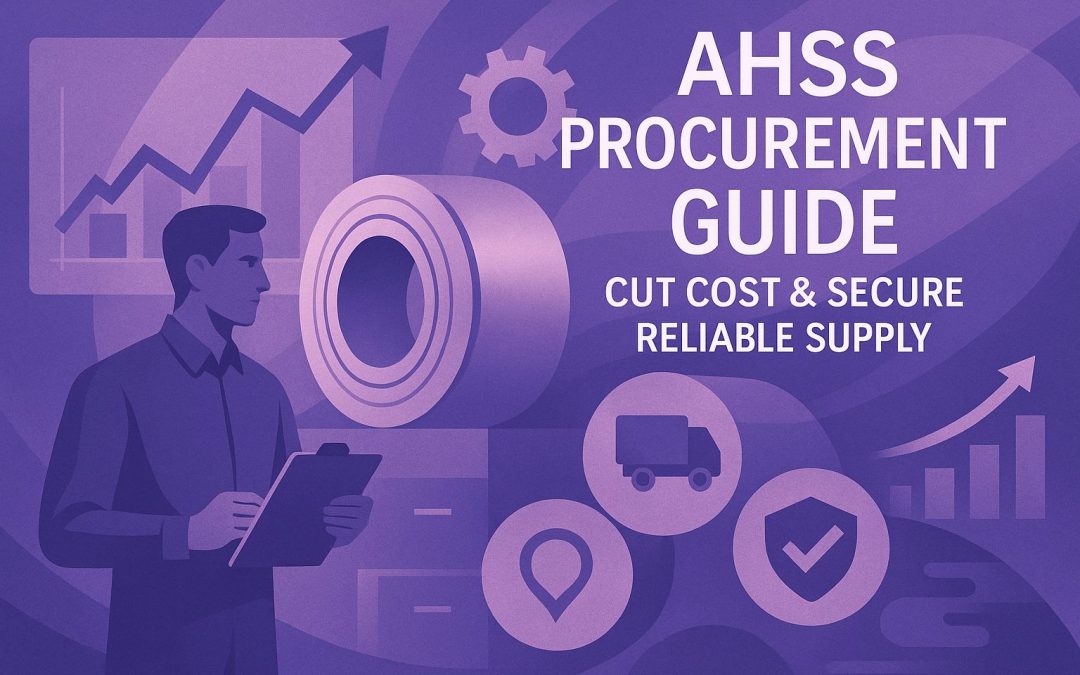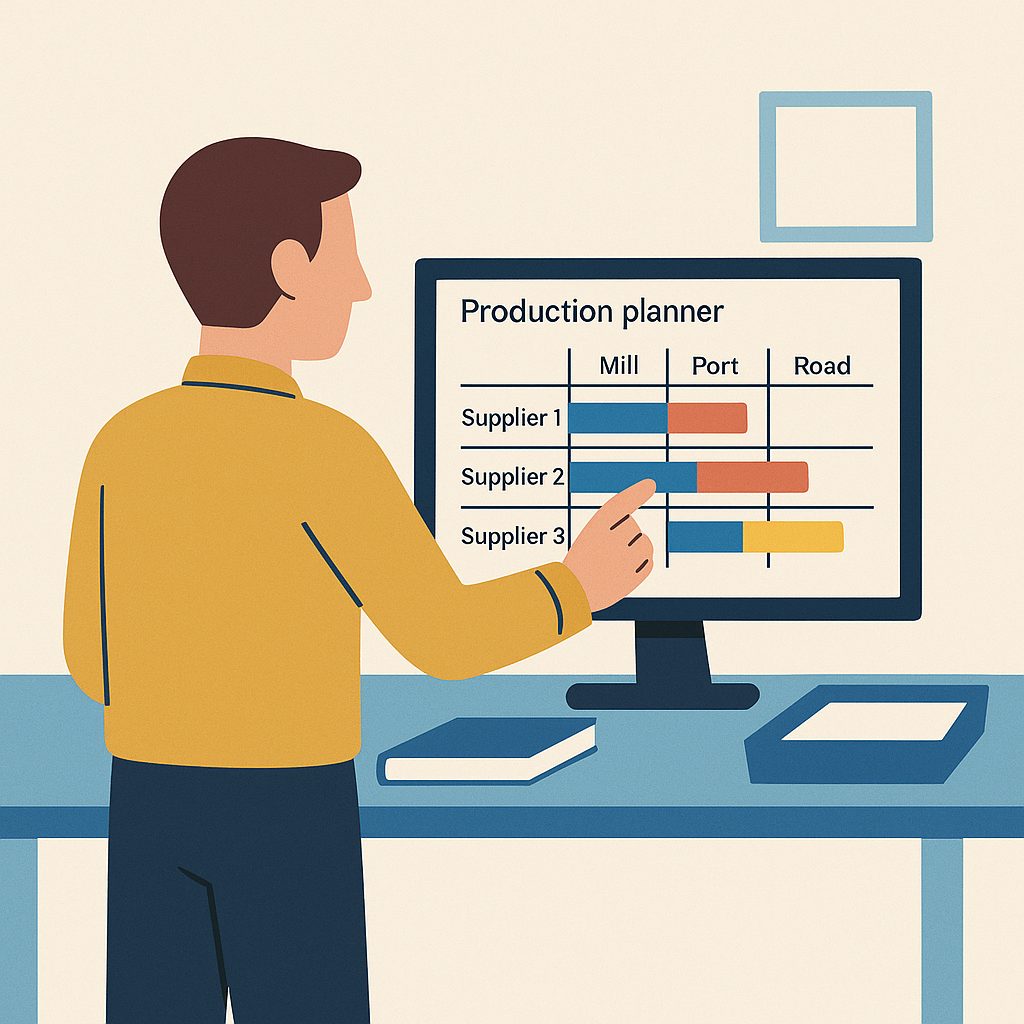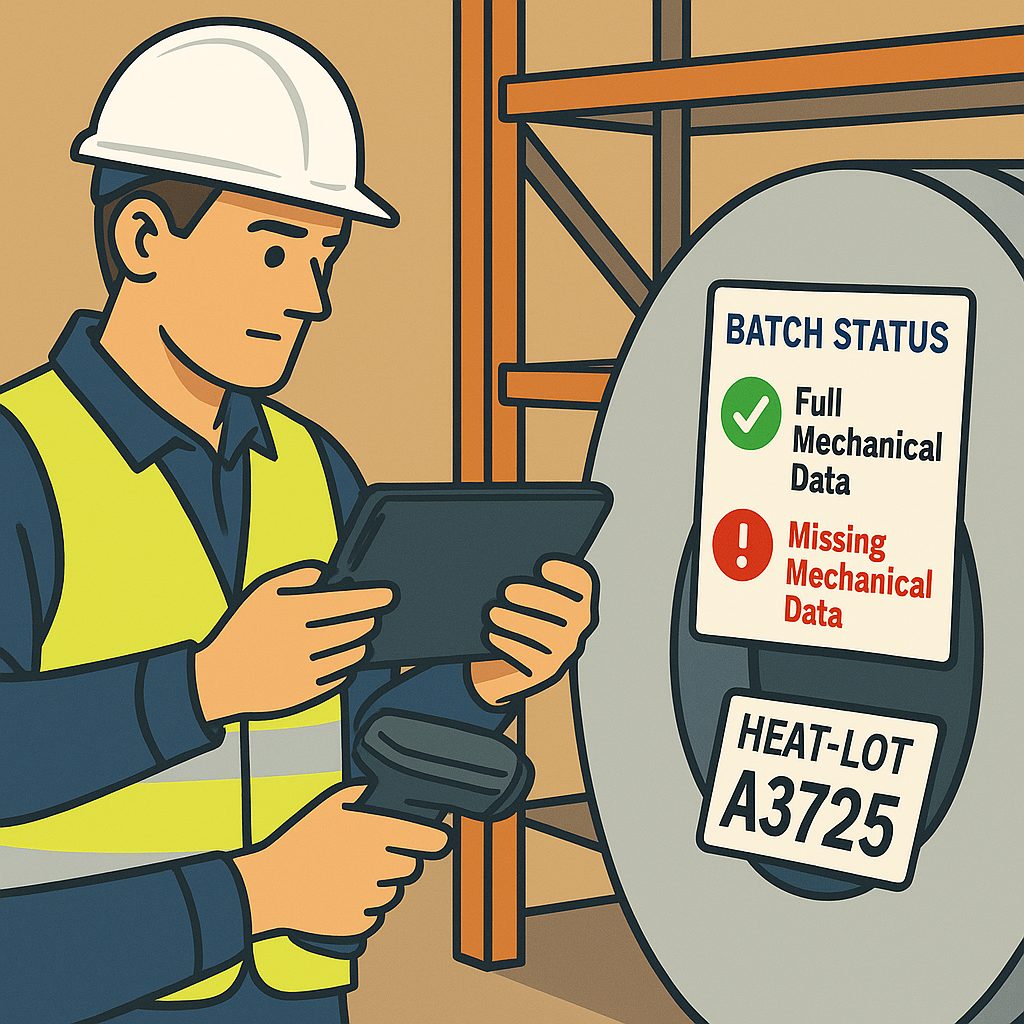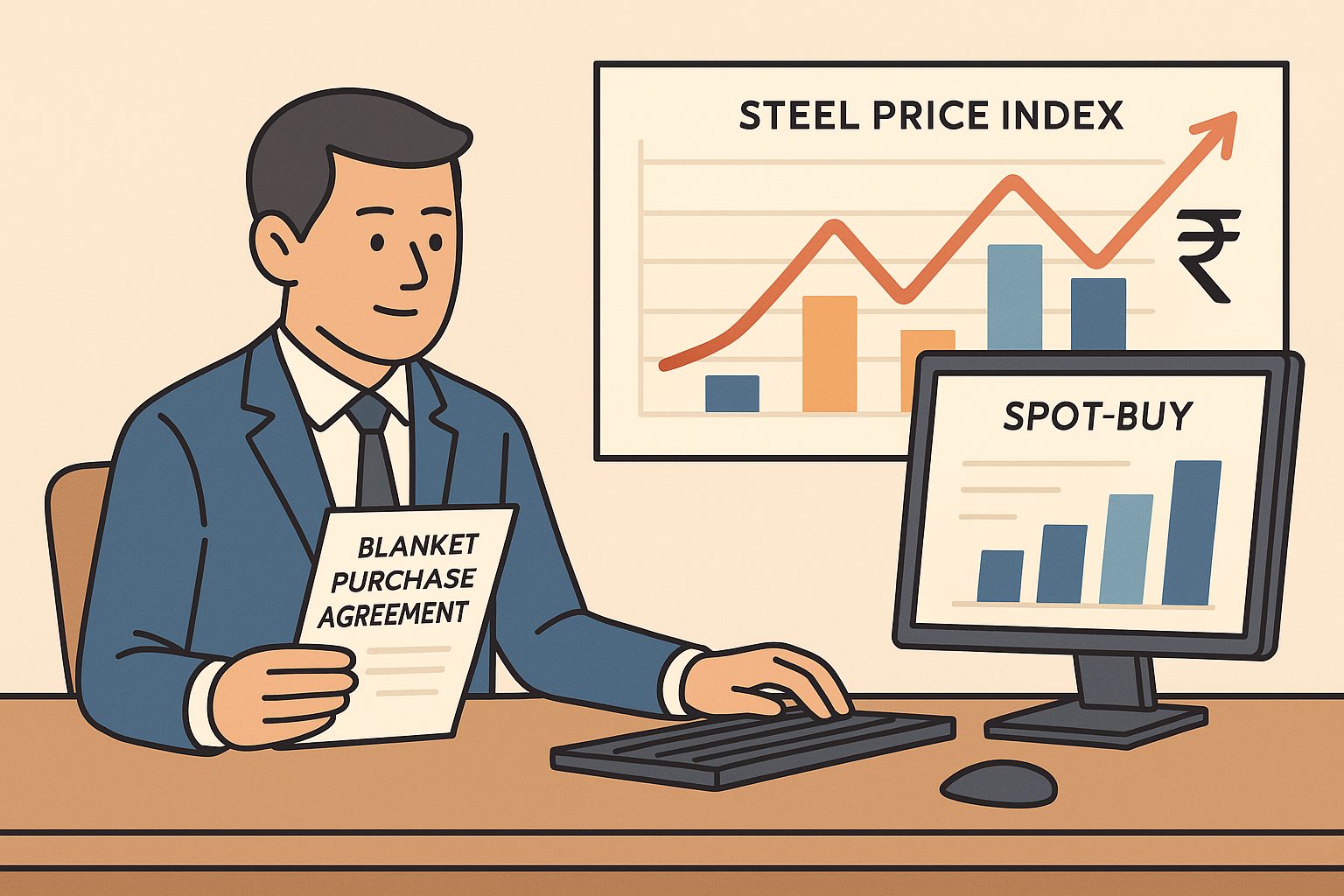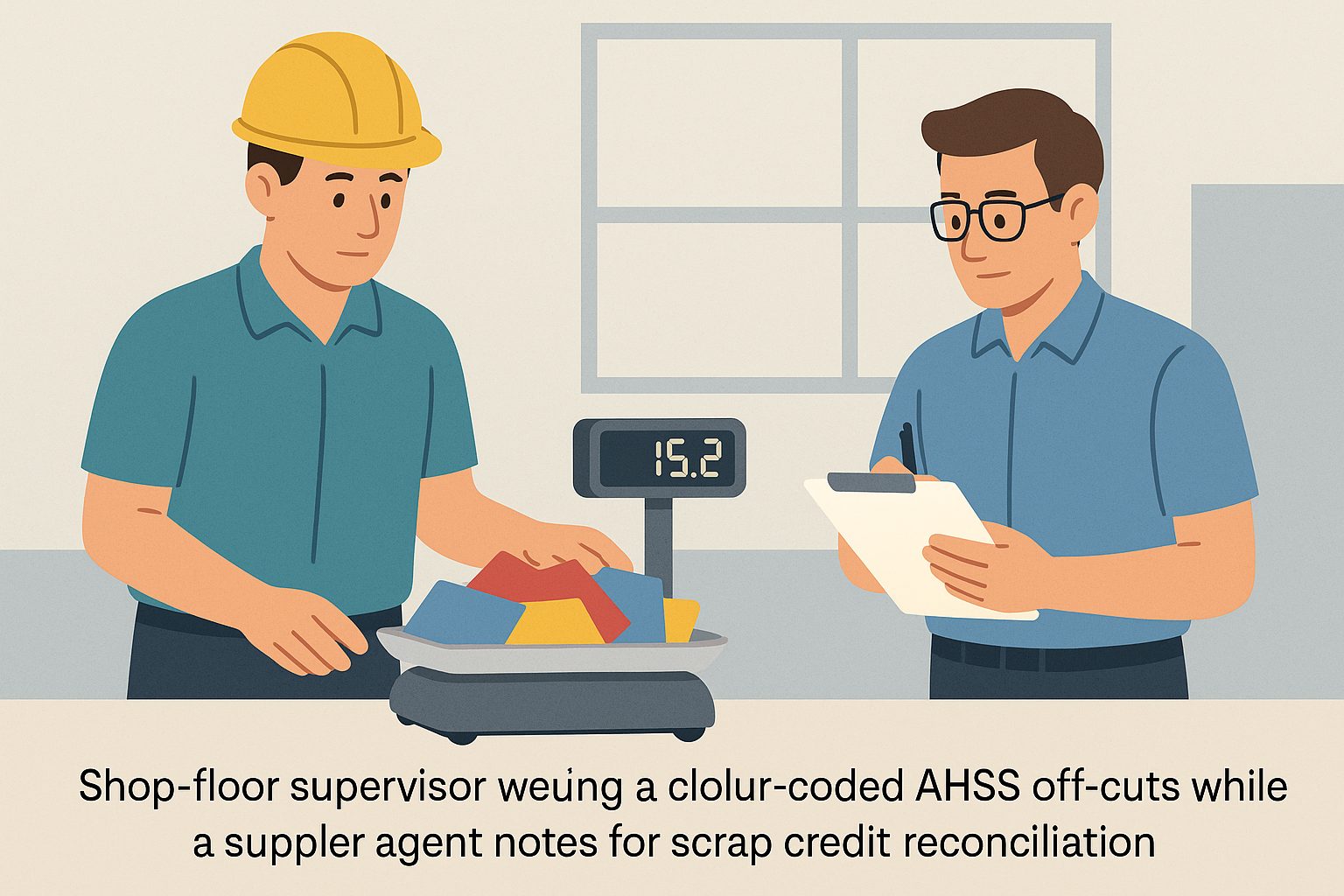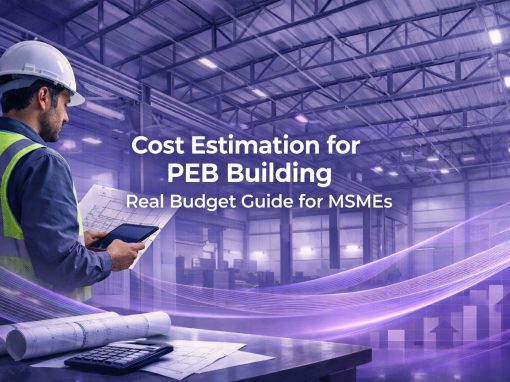Table of Contents
Indian MSME manufacturers feel relentless pressure to lighten parts without losing strength. Advanced high strength steel (AHSS) meets that brief yet sourcing it can test even seasoned buyers.
Layered tariffs, volatile coil prices, long mill queues and documentation lapses combine to widen the gap between quoted and landed cost. Miss those hazards and margins shrink before the first press stroke.
This guide unpacks the numbers, exposes typical blind spots and offers field-tested methods for negotiating dependable supply of high strength steel grades at the right price and lead time. Each section delivers checklists ready for direct use in shop-floor decision making. Use them to brief finance, quality and logistics before signing the next purchase order.
Map Out Your Total AHSS Cost in India
A quotation for AHSS rarely tells the full story. The rate per tonne is only the ticket price; the real bill emerges as soon as coils leave the mill yard. Port handling, yard storage, inland freight and quality surcharges stack up, one after another, until the figure on your cost sheet bears little resemblance to the opening bid. Margin slips quietly when these extras stay hidden.
Begin with a worksheet that forces every number into the open. Feed in coil width, thickness, yield allowance, even the scrap factor your press line typically generates. Add import duty for alloy steel, customs brokerage, marine insurance and the week’s forex rate if the cargo travels by sea. Record the exact day your GST credit will clear; a two-week delay ties up working capital and invites overdraft fees. Then map transport lead time against daily consumption. A last-minute partial truck can wipe out whatever you saved during price negotiations.
Next, weigh domestic supply against import options without assuming one is always cheaper. Local integrated plants trim transit risk, yet they sometimes offset that advantage by insisting on shorter credit windows or higher minimum order tons. Imported coils, on the other hand, may look attractive until rupee swings, demurrage and detention charges surface. Smooth the volatility by plotting a three-month moving average before making any commitment.
Finish with a technical sense-check. Compare the mill’s mechanical certificate with the tensile strength chart specified by your customer. Hot-rolled AHSS coils suit deep-draw automotive stampings; cold-rolled sheets satisfy appliance skins that demand tight surface control. Reject any batch lacking a mill test certificate or clear heat-lot identification. Metallurgical surprises discovered at the press line cost far more than an extra hour of paperwork up front.
Share the completed sheet with finance, quality and logistics. When everyone speaks from the same, itemised page, vendor meetings move from speculative bargaining to precise, data-driven negotiation—and that is where meaningful savings begin.
Build a Lead-Time Risk Matrix
Late coils stall presses, delay shipments and trigger penalty clauses. One Nashik auto-component plant saw this firsthand when an AHSS supplier slipped a promised six-week dispatch to nine; the customer contract allowed only forty-eight hours of slack, so the line stopped and overtime costs spiked. A lead-time risk matrix would have flagged that weak link weeks earlier.
Begin by listing every stage that touches the steel: slab casting, hot rolling, cold reduction, pickling, inspection, port handling, inland haulage and yard unloading. Record realistic time ranges, not brochure targets. Domestic integrated steel plants quote three weeks for hot rolled AHSS coil; add four working days if the monsoon slows rail wagons. Imported cold rolled AHSS sheet passes customs faster at Mundra than at Nhava Sheva, yet vessel berthing slots can slip by a week. Capture each variable in hours, then convert to a combined calendar window.
Next, plot supplier performance against that baseline. Use historical receiving dates to grade vendors green, amber or red. A mill that hits the window ninety-eight percent of the time earns green status; anything below ninety invites deeper scrutiny. Overlay public holidays, furnace maintenance schedules and peak export months. These external markers often explain sudden bottlenecks.
Finish with mitigation layers. Define a buffer stock rule—daily consumption multiplied by the longest red-zone delay, plus three days. Pre-approve a secondary service centre for toll-processing emergency blanking. Secure a standby truck contract at a fixed per-kilometre rate; the premium remains below the cost of idle presses. Review the matrix every quarter with production, logistics and finance. Changes in scrap buy back volumes or new crash safety compliance grades can disrupt timing assumptions.
The matrix turns abstract delivery promises into measurable probabilities. With risks visualised, MSMEs can adjust order cadence, negotiate firmer clauses and avert the kind of costly stoppage that can erase an entire quarter’s margin.
Qualify Suppliers with a Robust Vendor Matrix
A single out-of-spec coil can chew through an entire month’s profit. Yet many buying teams still choose suppliers on unit price alone. A well-built vendor matrix stops that habit by turning subjective impressions into hard scores that travel smoothly from the shop floor to the boardroom. Start with four pillars: process capability, documentation rigour, delivery reliability and cost-of-failure exposure. Assign each pillar a weight based on business impact—delivery reliability, for example, often sits at 35 percent for tier-II auto suppliers that live under strict line-stop penalties.
For each pillar, list clear, verifiable indicators. Process capability rests on Cpk values; anything below 1.33 flags a risk of dimensional drift during forming. Documentation rigour hinges on mill test certificate completeness and heat-lot traceability depth. Delivery reliability uses rolling 90-day on-time percentages, not calendar claims. Cost-of-failure combines scrap, re-pressing, logistics premiums and potential customer charge-backs. Give every indicator a score from 0 to 10, multiply by the pillar weight and total the results—now each vendor owns a number that reflects real-world risk, not sales-pitch polish.
Verification protects the integrity of that number. Cross-check certificate tensile values against the customer’s published chart. Pull two random coils from each heat lot for bend tests; failures here hint at wider shop-floor lapses. Examine forming-simulation reports to confirm the grade’s weldability and flange performance. Any supplier unwilling or unable to share these proofs inside 24 hours should slide down the matrix, no matter how attractive the base rate appears.
Review scores every quarter. A furnace upgrade, a workforce change or a sudden rush of export orders can shift capability overnight. By keeping the matrix live, procurement leads, quality heads and finance teams speak the same language, plug hidden leak points early and protect margin before problems reach the press line.
Align Contract Strategy with Cash-flow Reality
Price Model Fit
Blanket purchase agreements give stability when production runs stay steady. Peg the unit rate to a recognised steel index and insert a quarterly reset band. This shields the buyer from sudden spikes yet passes on fair market drops. For batch builders or seasonal exporters, a spot buying strategy paired with a forward cover on foreign exchange often puts less strain on cash. Always test either route against a three-month average of price volatility in the steel market before signing.
Credit Cushion
High-spec coils tie up working capital the moment lorry doors shut. Sidbi invoice discounting frees cash within forty-eight hours, converting an approved invoice into liquidity without extra collateral. Use that headroom to lock in early-payment discounts or bridge an unexpected surge in demand. Keep an eye on the service fee; above 1.2 percent per month the benefit fades.
Risk Clauses
Every clause must map to a live risk. If coil lead time exceeds the vendor’s declared window by more than five days, the rate should roll back to the previous month’s index level. Mirror this with a late-payment interest cap to keep both parties alert. A penalty-free exit trigger tied to repeated documentation lapses, such as missing mill test certificates, ensures quick supplier rotation without legal noise.
Cashflow Synchronisation
Line up payment milestones with production burn. When press lines cycle on a forty-five-day cash loop, schedule instalments on day fifteen and thirty-five, not at delivery plus thirty. Finance avoids peak overdraft charges, while the mill secures predictable inflows.
The right contract framework matches price certainty with liquidity needs. When crafted on real consumption data and updated quarterly, the agreement stops raw material swings from bleeding the balance sheet and keeps production planners, treasury, and suppliers working from the same playbook.
Use Scrap Revenue and Short-Term Credit to Shield Profit
Clean off-cuts from AHSS tooling carry far higher resale value than mixed mild-steel scrap, yet many workshops still throw them into a common bin. Mark each sheet by heat-lot number as soon as it leaves the press; mills will pay a premium for traceable alloy that drops straight back into their melt shop. Where monthly scrap exceeds five tonnes, anchor a buy-back clause to the previous week’s SteelMint index. If the rebate slides below ninety percent of that benchmark, hidden deductions are probably at work.
Accuracy at the scale decides how much cash returns to the ledger. Calibrate weighbridges every Friday and log gross, tare and net figures in a shared cloud sheet that finance can audit. Even a one-percent drift on a ten-tonne load wipes out the saving equal to a full percentage point on fresh coil pricing. Pair the sheet with time-stamped photos to close arguments over moisture content or packaging weight.
Redirect scrap proceeds into fast, collateral-light credit. Sidbi invoice discounting or a well-priced export factoring line converts the rebate into working capital within forty-eight hours, matching the outflow rhythm of new coil orders. Time the tenor to the typical coil lead time so funds clear before the next purchase order goes live. Smooth cash flow cushions late customer payments and protects production from short-notice price spikes.
There is also a sales upside. Original-equipment makers favour suppliers who document a circular-material loop. Record annual scrap-offset tonnage, translate it into avoided carbon and highlight the figure in the next tender pack. A disciplined scrap programme therefore pushes two needles at once: it trims cost per kilo and strengthens the sustainability score that often breaks ties at the negotiating table.
Conclusion
Advanced high strength steel sits at the heart of India’s next wave of lightweight design, yet its promise means little unless cost, lead time and quality risk stay controlled. The frameworks outlined above turn raw price sheets into full landed-cost maps, expose weak delivery links and grade suppliers against verifiable metrics. Scrap rebates and short-tenor credit then lock in cash flow, keeping presses running even when markets tighten.
Use the worksheets, matrices and contract clauses as living documents. Update numbers every quarter, feed fresh data from freight invoices and mill certificates, and involve finance as soon as thresholds shift. When each department pulls from the same scorecard, negotiations gain precision, and margin targets stop leaking through overlooked surcharges or delivery slips.
Indian MSMEs that master this disciplined approach will secure AHSS at the right price, in the right window and with the right documentation. The result is stronger bids, steadier production schedules and a supply chain resilient enough to outlast today’s volatile steel cycle.
Looking to procure steel?
Tata nexarc helps manufacturers, builders and MSMEs source certified steel products, compare prices, and choose the right grade as per IS codes—with complete traceability and procurement confidence.
FAQs
What HS code applies to AHSS imports into India?
Do AHSS coils require BIS certification for domestic sale?
How is inward freight GST credit claimed on interstate AHSS shipments?
What packaging spec limits coil-edge damage during transit?
Are export rebates available when AHSS is converted and re-exported?
Which Incoterm balances control and risk for MSME imports?
What marine insurance rider covers coil rust during monsoon delays?
How often should press tools be retuned when switching to AHSS?
Can SIDBI refinance machinery upgrades for AHSS forming?
Which ESG metrics strengthen tenders for AHSS-based parts?
Ananya Mittal blends a background in data science with a passion for writing, contributing to Tata Nexarc’s efforts in creating insightful, data-informed content for MSMEs. Her work focuses on exploring sector-specific challenges and opportunities across procurement, logistics, and business strategy. She is also involved in leveraging analytics to strengthen content performance and deliver actionable insights to India's growing B2B ecosystem.
